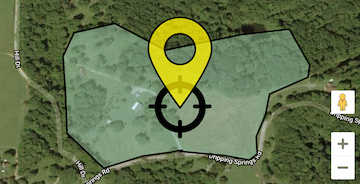Late Winter A Good Time to Add Clover to Food Plots

By Wayne Tankersley
To attract and grow trophy deer, wildlife experts strongly recommend providing a productive, palatable and nutritious food source year round. Perennial clovers fit well into a year round wildlife management program and have become highly popular choices for food plot plantings. In general, clovers are a preferred browsing choice of deer and contain the high energy and protein needed for maximum body growth and antler development. With a perennial clover, one gets a clover that becomes established and is available year round for deer and turkey to use at their pleasure.
There are several ways to get perennial clover established in food plots, but none more easily and simply done than winter or "frost" seeding.
With the introduction of Pennington's Durana, perennial white clover has become the forage of choice for many wildlife professionals and enthusiasts. Durana was developed to be persistent year after year and to withstand heavy grazing pressure and periods of heat and drought common to most wildlife food plots.
There are several ways to get perennial clover established in food plots, but none more easily and simply done than winter or "frost" seeding. The theory behind frost seeding is that during winter, the soil surface freezes and thaws causing the soil to "honeycomb" or loosen. Broadcasting clover seed over these loose soils in mid to late winter (late January - early March) allows for excellent seed-soil contact. There are several advantages of planting clover by frost seeding. It is easily done without expensive or complicated equipment. Also, frost seeding occurs in mid-winter when clover insect pests are typically low or non-existent. In addition, by mid-winter, established food plots are usually grazed low thus allowing better soil surface exposure and less competition for the clover seedlings. Forage agronomists with Pennington recommend broadcasting 5 lbs. of Durana per acre when frost seeding. They further suggest rolling the seeded area with a culti-packer or similar roller device to increase seed-soil contact and improve clover emergence.
While perennial clovers have some tolerance to soils with marginal fertility, they grow and persist best when soil pH is between 6.0 and 6.5 and the soil phosphorus and potassium levels are in the upper medium to high range. Because clovers are legumes and manufacture their own nitrogen, no additional nitrogen fertilizer is needed for pure clover stands. The local university extension office or farm supply dealer can assist with providing information and materials needed to collect a soil sample.
Wayne Tankersley is a retired University of Georgia Extension Agent. He owns and operates a commercial beef cattle farm and works as a forage consultant.
